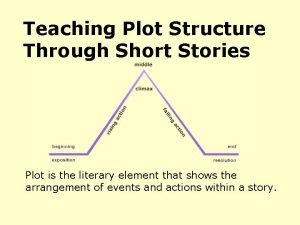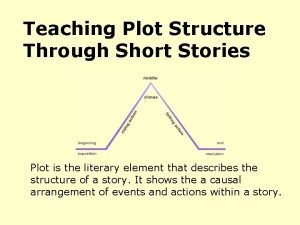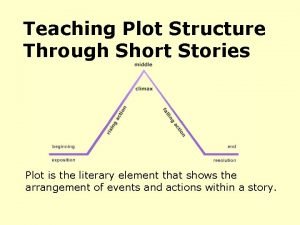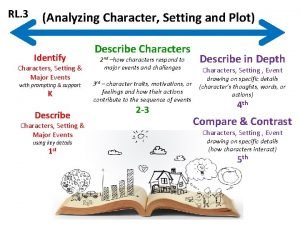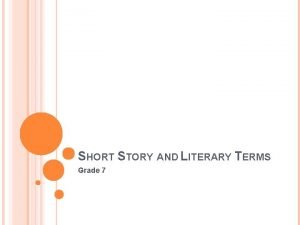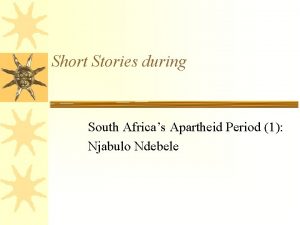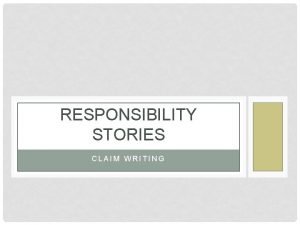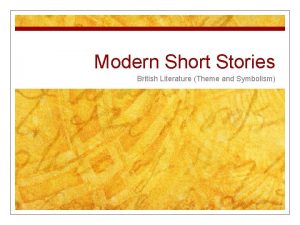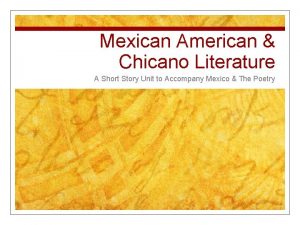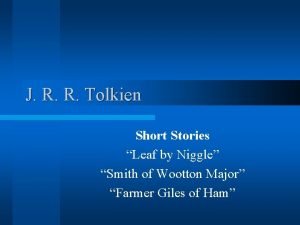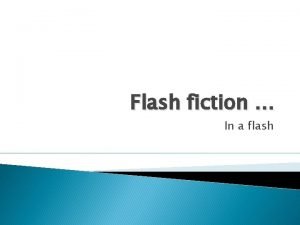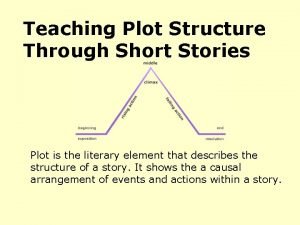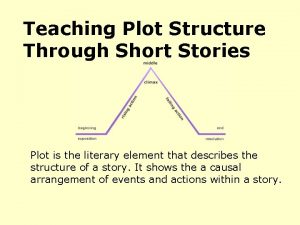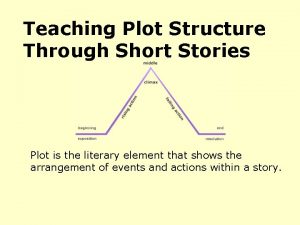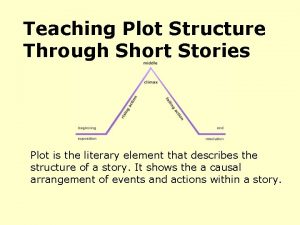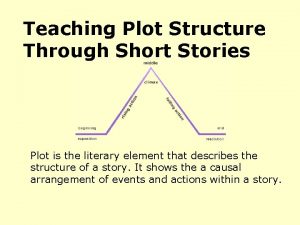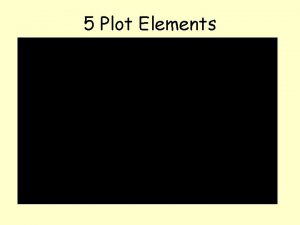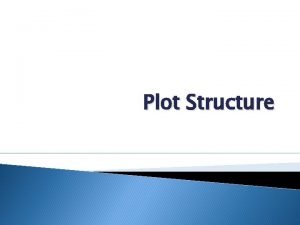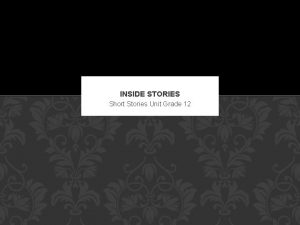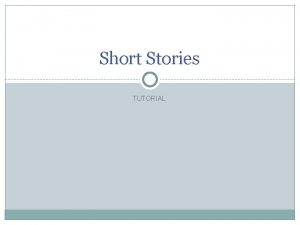Teaching Plot Structure Through Short Stories Plot is














- Slides: 14

Teaching Plot Structure Through Short Stories Plot is the literary element that shows the arrangement of events and actions within a story.

Types of Linear Plots can be told in Chronological orderevents told in the time order they actually happened. Flashback-when the character goes back to an event that happened earlier in time.

Plot Components Climax: the turning point, the most intense moment—either mentally or in action Rising Action: the series of conflicts and crisis in the story that lead to the climax Falling Action: all of the action which follows the climax Exposition: the start of the story, the situation before the action starts Resolution: the conclusion, the tying together of all of the threads

Conflict is the dramatic struggle between two forces in a story. Without conflict, there is no plot.

Types of Conflict Interpersonal Conflict Human vs Nature Human vs Society Internal Conflict Human vs Self

Characters • The people, animals, or other beings that take part in the stories events/plot. • Protagonist: The main character in a story • Antagonist: A character or force in conflict with the main character • Round Character: A fully developed character with many traits (strengths and weaknesses) • Flat Character: An underdeveloped character • Dynamic Character: A character who grows and changes throughout story • Static Character: A character who does not change in story

Shrek Characters • Protagonist: Shrek • Antagonist: Lord Farquaad (stands in his way…kills ogres and tries to keep Shrek and Fiona apart. • Shrek is a dynamic character because he changes throughout the story: he becomes “softer” and lets people into his life. • Shrek is round because we see his strengths and weaknesses: he seems like a real person!

Setting • The time and place of a story’s events.

Theme • The message/lesson the story conveys • What are the big ideas? What lesson can be learned? – : Shrek: accepting oneself, true beauty is not external

Point of view: who is telling the story First person: a person inside the story is telling it Major: a main character is telling it Minor: a minor character is telling it Narrator: a person is relating what happened to others

Point of view Third person: a person outside of the story is telling it Omniscient: “All knowing” Limited omniscient: we follow around one or two characters knowing what they do and think

Other terms • tone: the author’s attitude toward the work (happy, sad, scary, suspenseful) • mood/atmosphere: the emotional effect created by a work – Edgar Allen Poe’s stories create a scary/intense/feeling in the reader…

Symbolism • symbol: something stands for a concept larger than itself – standard or cultural symbols – author-created symbols = = Innocence America/Democracy/Freedom = Peace

More terms • Foreshadowing: hints or clues of what is to come • Imagery: painting pictures with words • Flashback: going back to past events • Style/Diction: the author’s manner of writing and word choice. – S. E. Hinton uses a lot of slang to make The Outsiders more realistic to teenage talk.
 Long and short
Long and short Plot and structure of a short story
Plot and structure of a short story Traditional plot structure
Traditional plot structure Rising action of shrek
Rising action of shrek Describe a setting
Describe a setting Sjort story
Sjort story Elements of a short story grade 7
Elements of a short story grade 7 Short stories about apartheid
Short stories about apartheid Story about responsibility
Story about responsibility A shocking accident theme
A shocking accident theme Mexican short stories
Mexican short stories Short stories with main idea
Short stories with main idea Tolkien short stories
Tolkien short stories Barney short story analysis
Barney short story analysis Currents hannah voskuil
Currents hannah voskuil

